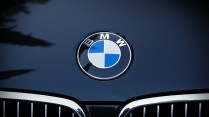Tesla Responds to Regulatory Shifts, Updates EV Range Estimates
By Dabbie Davis
Jan 09, 2024 09:29 PM EST

Tesla recently revised down the estimated driving ranges for its electric vehicles in line with new U.S. government vehicle-testing regulations aimed at ensuring accurate real-world performance representation. Tesla's habit of exaggerating their cars' ranges has not only frustrated customers but has also faced backlash from automotive testing experts and even caught Reuters' attention.
Discrepancies Spotted
The company allegedly manipulated the algorithm controlling dashboard range estimates about a decade ago, presenting optimistic projections. Furthermore, a 2022 report revealed the existence of a covert team within Tesla to handle and dismiss numerous driving range complaints while canceling related service appointments. Tesla's changes address driving range disparities and new testing standards. This shows how the electric vehicle market is offering more performance details.
Reuters said that Tesla confirmed in an October regulatory filing that federal investigators subpoenaed its vehicle range. Recently, Tesla decreased the estimated driving ranges for different versions of its Model X, Model S, Model Y, and Model 3 vehicles.
This was discovered through a Reuters analysis comparing current marketing pages on Tesla's website with archived versions and the range estimates for 2023 models available on a US government site.
Tesla's Latest Action: Lowers EV Range Estimates
Moreover, Tesla's website, the projected range for a Model Y Long Range is currently stated as 310 miles. In contrast, the Environmental Protection Agency's (EPA) fuel economy site maintains the original range for the same vehicle at 330 miles.
The discrepancy is evident, showcasing a reduction in Tesla's range estimates. Additionally, for the performance variant of the Model Y, categorized as a compact crossover SUV, Tesla has revised the range from 303 miles to 285 miles, as revealed in the Reuters review.
2024 Regulations
The updated regulations mandate automakers to assess electric vehicles' (EVs) driving range and fuel efficiency in their primary or "default" driving mode, which activates when the driver initially starts the car. Numerous contemporary vehicles, Tesla included, offer various driving modes enabling drivers to optimize either efficiency or power.
READ MORE: Hyundai, Kia Theft Rates Explode, Up by Over 1000% Since 2020
Starting in 2024, new EPA regulations dictate that if a car lacks a default driving mode, automakers must test it in both best-case and worst-case modes for efficiency and average the outcomes. Tesla's marketing pages don't specify a model year for estimated ranges.
Tesla provides various driving modes, from "Chill" for efficiency and extended range to "Drag Strip Mode" for improved acceleration in higher performance models, as outlined in 2023 Tesla owners' manuals. In the Model Y owner's manual, Tesla suggests using "Chill Mode" as a tip to maximize range.
The EPA, which regulates automakers' fuel economy and driving range claims, didn't explain its testing regulation, its impact on Tesla or other manufacturers, or whether it certified Tesla's new range estimates to Reuters.
According to EPA spokesperson Nick Conger, adjustments to efficiency estimates occur typically with new model years, incorporating updated data from vehicle changes or test procedure updates.
Reuters couldn't confirm if Tesla adjusted range estimates across all variants of its models. Automakers conduct their own tests for range and fuel efficiency estimates but must adhere to EPA guidelines. The EPA independently retests some vehicles to verify manufacturers' reported figures.
Some of Tesla's adjustments were minor, like the shift from a 333-mile projected range to 326 miles for the Model X Plaid, a high-performance version of the luxury SUV. However, other alterations were more significant. For instance, the estimate for the Model S Plaid, a luxury sport sedan, dropped from 396 miles to 359 miles, evident from a recent comparison between Tesla's current website and an archived version.
According to automotive experts, Tesla's range estimates, which were found to be exaggerated upon testing, necessitated these reductions. Edmunds, an automotive website, noted that the majority of electric vehicles they tested surpassed their advertised ranges, except for Tesla, where this was an exception.
RELATED ARTICLE: Tesla's Cybestruck Survey Reveals Limited Interest Among Respondents
Copyright @ MOTORTIMES, All rights reserved. Do not reproduce without permission.








